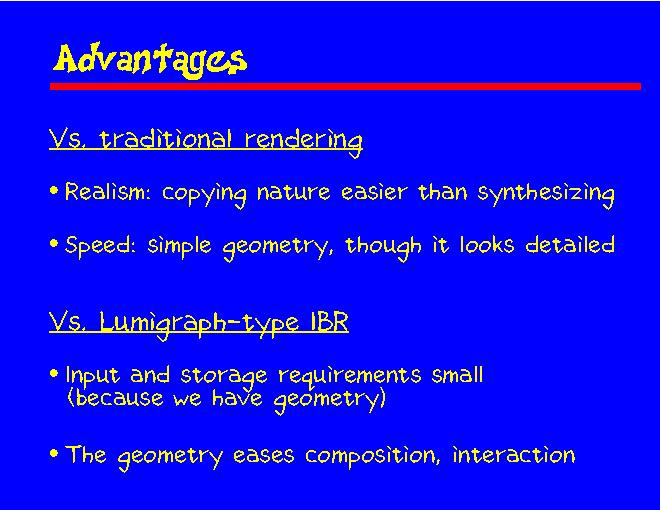Click slide for next, or goto previous, first, last slides or back to thumbnail layout.

Click slide for next, or goto previous, or back to thumbnail layout.
Click slide for next, or goto previous, first, last slides or back to thumbnail layout.

Click slide for next, or goto previous, or back to thumbnail layout.
View-dependent texturing and view-based rendering reside somewhere in between of traditional model-based and image-based rendering.
Compared to traditional rendering that accurately models both the geometry and the reflectance properties, our methods can create realistic images more easily. After all, it is much easier to copy nature than synthesize something from scratch that looks natural. Also, this realism can be obtained faster than with traditional methods. Global illumination effects do not need to be simulated, and as we have seen, we can get away with quite simple geometric models.
Our methods have other advantages when compared to Lumigraph-type image-based rendering systems. Such systems require a huge number of input images, and they need to store a large lumigraph or light-field function. Because we have fairly accurate geometric information, we need to use and store only a modest number of images. Also, having actual geometric models makes tasks such as compositing several objects to the same scene easier, and enables interaction if the objects are used to populate virtual worlds.